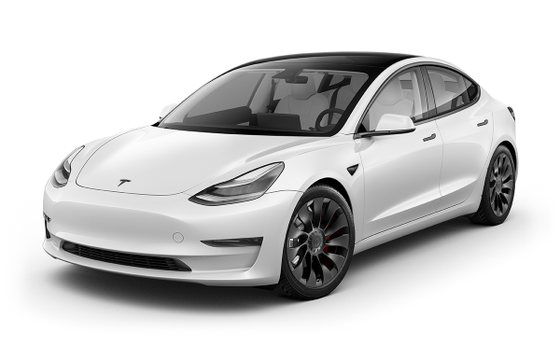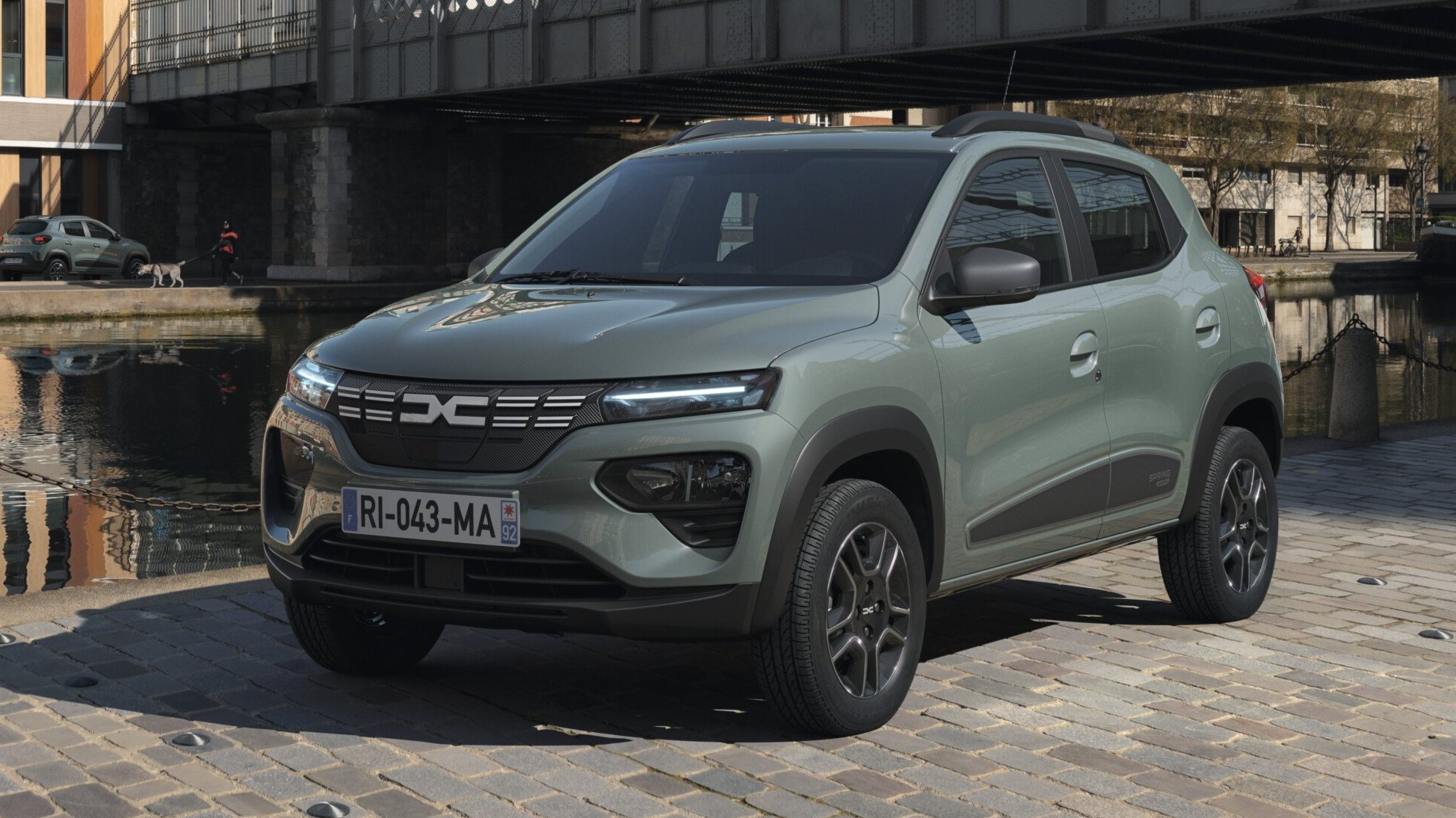At a time when the (high) price is pointed out as one of the main reasons why there are no longer drivers who adhere to 100% electric mobility, confirmation arrives that having an ecological and efficient tram, at last And after all, it doesn’t necessarily have to be a disaster. This is because, for the “green arm” of Euro NCAP, the so-called Green NCAP, the best battery-only model tested in 2022 by the experts of the European consortium is the affordable Dacia Spring.
The Romanian tram was subjected to the most varied tests and passed all of them with distinction, achieving the feat of staying ahead of the Tesla Model 3which until recently was the benchmark in terms of efficiency, although obviously larger, heavier and more powerful. By the way, Dacia’s city crossover even eclipsed the performance of models such as the Renault Mégane E-Tech, its “relative” group, the Cupra Born and the Nio ET7. Behind were also the Audi Q4 e-tron and the Hyundai Ioniq 5.
But, before proceeding with the final classification given by Green NCAP, it is important to clarify how this organization chooses the car that has the least impact on the environment and that, as a result of a weighting based on three criteria, prevails. as the best purchase option among the new models introduced on the European market, combining a reduced environmental footprint with better use of the energy stored in the battery. This is, having an efficient energy management, which in the end translates into a low cost of use.
NCAP Green Ranking 2022
1st Dacian Spring – 9.9
2nd Tesla Model 3 – 9.8
3rd Child ET7 – 9.6
3rd Renault Megane E-Tech – 9.6
3rd Cupra Born – 9.6
The three criteria evaluated by Green NCAP are the Clean Air Index, the Energy Efficiency Index and, lastly, the Greenhouse Gas (GHG) Index.. The first two are more easily intelligible, indicating, respectively, the pollutants emitted by the exhaust pipe -which in a pure electric car is an immediate guarantee of a maximum score (10)- and the vehicle’s ability to make use of the energy it stores in The accumulators The third is based on a “well to wheel” approach, that is, it considers the GHG emissions associated with the energy supply.
Spring is “an example” for the industry
As Green NCAP himself explains, it was easy for the Dacia Spring to get top marks in the Clean Air Index. However, the small model of the Renault Group that wants to change the urban landscape, won the victory for having achieved the highest classification in Greenhouse Gases and, what is more important, a score of 9.8 never before achieved ( out of 10) in the Energy Efficiency Index. The explanation for this lies essentially in the weight, only 1045 kg. Being very light and taking advantage of the small and not very powerful electric motor, “the Dacia urban compact received the highest score in three of the four tests carried out, with an energy consumption below the maximum limit of Green NCAP points”, says the consortium under the umbrella of Euro NCAP. He adds that “89% of the energy extracted from the electrical network is available at the output of the battery, which means that the charging and discharging process is efficient”, which is contributed by DC charging with low power (only 30 kW). For Green NCAP, there is no doubt that the Dacia Spring stands out for its low energy consumption and that, “with this excellent result”, the Romanian manufacturer’s tram “sets a standard for the industry”, managing to be both cheap, attractive in design and Environmentally friendly.
Dacian spring. We guide you to the cheapest tram and we tell you how it is
“With this model, Dacia is ahead of many other manufacturers in terms of its impact on the environment,” concludes Green NCAP. The verdict of this body could not be more exhaustive, recognizing that only 33 kW of power limits the dynamics of the small city car, but its aesthetics and efficiency will appeal to “those seeking individual, clean, efficient and accessible urban mobility”. What is certain is that the low power and the spartan atmosphere on board will soon be compensated with the arrival of the Extreme version, as we have already indicated here.
For only €50 more, the Dacia Spring improves (much)
Since its launch, the Dacia Spring has already accumulated more than 100,000 orders, with deliveries ensured by the only factory where this model is produced, the Dongfeng unit in Shiyan, China, from where it is exported to different markets, including Portugal. The city car with the air of an SUV does not impress with its power (only 45 HP) and is limited to a maximum speed of 125 km/h, but with a battery of only 27.4 kW of total capacity (26.8 kWh useful). , comes to announce a range of 314 km in the city and mixed cycle, according to the European WLTP protocol, 230 km. The reality of use, as in other electric models, points to deviations. Green NCAP says that at an ambient temperature of 23ºC, the Spring should not do more than 140 km on the highway, precisely the condition simulated in the laboratory in which consumption shot up to 23.0 kWh/100 km. On average, consumption will be close to 18.5 kWh/100 km, which translates into a range of 180 km between visits to the charging station.
So what about the Tesla Model 3?
Tesla’s cheapest electric, the Model 3, continues to run almost unquestionably. Hence the 9.8 it is awarded in the overall Green NCAP rating. It should be noted that the sports sedan from the American manufacturer has nothing to do with the Romanian crossover, in terms of philosophy, performance, technological equipment and… price. While around here the Dacia Spring currently sells for values starting at €20,400, the cheaper Model 3 costs €44,990, offering in exchange an electric motor with 208 kW/283 PS of power and 353 Nm of torque, which They allow you to go from 0 to 100 km/h in 6.1 seconds, and then reach a top speed of 225 km/h. That is to say, 100 km/h more than Spring, which, by the way, is inevitably slower in pique (after 19.1 seconds the threshold from 0 to 100 km/h is exceeded).

Much heavier than the Dacia (1,760 kg of mass compared to just 970 kg), the Model 3 announces an average consumption of 14.1 kWh/100 km, so its 60 kWh battery allows it to announce 491 km of autonomy in mixed cycle and 603 km in mixed cycle. city. Green NCAP ensures that the Tesla will be closer to 450 km of real autonomy, but “it has very low consumption, which shows that it was designed with a special focus on efficiency and autonomy.” He also adds that the Model 3 is something of a king of the highway, having scored the highest for this requirement of all the vehicles tested, registering consumption of 21.1 kWh. However, the Tesla loses much of its range when temperatures drop below 7°C. There, according to the European organization, consumption shoots up 72%. This and the losses detected in the load tests (11 kW in alternating current) move the Model 3 away from the Dacia Spring, allowing it to succeed in the greenest category of the Green NCAP.
However, the agency supervised by the Euro NCAP, while attributing leadership to Spring in terms of the environment and efficiency, also takes the opportunity to recall that in the field of safety, the Romanian tram was a disaster. It earned just one star in Euro NCAP testing, scoring 79% for adult protection, 65% for child protection, 39% for pedestrian protection and 32% for safety systems. For its part, the Model 3 earned all five stars with, respectively, 96%, 86%, 74% and 94%. That is why Euro NCAP encouraged Dacia to “make the same long-term commitment to safety.”
Source: Observadora
